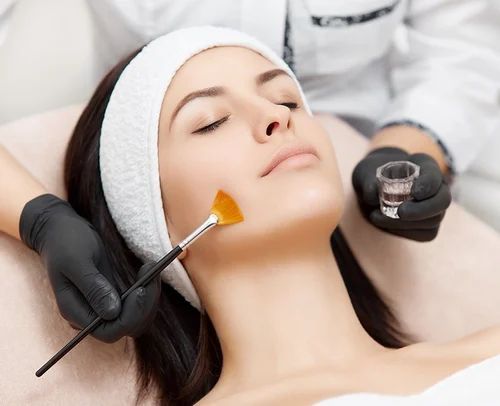Redness is one of the most common skin concerns affecting individuals with sensitive or reactive skin types. It can result from various underlying causes such as rosacea, sun exposure, environmental damage, post-acne inflammation, or skin barrier impairment. While redness is typically harmless, its presence can be both visually frustrating and emotionally distressing, especially when persistent.
Modern skincare treatments have evolved to address these concerns, and among them, Cold Peel in Dubai has emerged as a popular and effective option for reducing redness and improving skin tone without triggering further sensitivity.
What is a Cold Peel?
A cold peel is a non-invasive cosmetic skin treatment that gently exfoliates the skin without heat, harsh chemicals, or aggressive acids. Unlike traditional chemical peels that often involve high-intensity ingredients and downtime, cold peels use soothing formulations to target surface-level imperfections. These peels are specifically designed for sensitive and redness-prone skin.
How Cold Peel Targets Redness
Mild Exfoliation to Minimize Irritation
One of the primary benefits of a cold peel is its ability to exfoliate gently. Redness-prone skin often reacts poorly to aggressive exfoliants, which can strip the protective barrier and worsen the issue. Cold peels remove dead skin cells without causing heat damage or triggering inflammation, promoting a calmer, more even skin tone.
Anti-Inflammatory Ingredients
Cold peels are formulated with ingredients like chamomile extract, allantoin, and licorice root — all known for their soothing properties. These components actively reduce inflammation in the skin, addressing both visible redness and its underlying causes.
Hydration Boost for Barrier Repair
Many people with redness have a compromised skin barrier. Cold peels often include hydrating ingredients like hyaluronic acid, aloe vera, and panthenol that help restore moisture levels. Improved hydration supports barrier repair, which in turn minimizes visible redness and increases skin resilience.
Who is Cold Peel Best Suited For?
Sensitive and Reactive Skin
Individuals with sensitive skin types benefit the most from cold peels. The gentle nature of the procedure makes it a suitable alternative to conventional peels that can be too aggressive for this skin category.
Rosacea-Prone Skin
Cold peels may also help individuals with mild to moderate rosacea. While not a cure, the treatment can calm visible symptoms such as flushing, dryness, and irritation without aggravating the skin.
Post-Acne Redness
Post-inflammatory erythema (PIE) is common after acne clears. Cold peels can gradually lighten these red marks by promoting cell turnover in a controlled, soothing manner.
Benefits of Cold Peel for Redness
Immediate Soothing Effect
Many people notice a visibly calmer complexion right after the first session. This is largely due to the cooling and anti-inflammatory ingredients that reduce skin temperature and irritation.
Progressive Brightening
Over a series of treatments, skin tone becomes more uniform. Red patches and spots begin to fade as the skin heals and regenerates. The subtle exfoliation aids in revealing fresh, clear skin underneath.
Supports Other Treatments
Cold peel therapy can be integrated into a broader skincare routine. It complements other non-invasive treatments like hydrafacials or light therapy, enhancing overall skin health and reducing redness when used in conjunction with other strategies.
How the Cold Peel Procedure Works
Initial Skin Assessment
Before beginning, a professional will assess the skin’s condition to determine suitability. Skin type, sensitivity level, and the nature of redness will guide the approach.
Application of Peel Solution
The cold peel solution is applied evenly across the face. Unlike heat-based treatments, this peel delivers a cooling effect upon contact. The formula is left on the skin for a short period depending on skin tolerance and response.
Final Cleansing and Nourishment
After the peel is removed, a calming serum or mask is usually applied to lock in hydration and further soothe the skin. The entire session is quick, typically lasting no more than 30 to 45 minutes.
Things to Keep in Mind
Not a One-Size-Fits-All Solution
While cold peels are suitable for many, they may not be effective for all causes of redness — especially if the redness stems from severe underlying conditions or allergies. It's important to monitor how your skin reacts and follow professional recommendations for safe use.
Importance of Aftercare
To maintain the benefits of the treatment, aftercare is essential. Using mild, non-comedogenic moisturizers, gentle cleansers, and avoiding strong active ingredients immediately after treatment will help preserve results and avoid irritation.
Sun Protection is a Must
Even though cold peels are gentle, they still involve exfoliation. This makes the skin more sensitive to sun exposure. Applying a broad-spectrum sunscreen daily is crucial to protect newly treated skin and prevent further redness.
Cold Peel vs. Traditional Peels
Less Irritation and Downtime
Unlike glycolic or TCA peels, cold peels are designed for comfort. They focus on calming the skin while delivering gentle rejuvenation, making them ideal for people with chronic redness.
Suitable for All Seasons
Because there’s no peeling or extreme skin sensitivity post-treatment, cold peels can be done year-round. They are particularly useful during hot weather when redness tends to worsen due to sun and heat exposure.
Final Thoughts
Cold peel treatments offer a modern, skin-friendly approach to managing redness. Their gentle formulation, soothing properties, and hydration-boosting effects make them a suitable option for those struggling with reactive, red, or irritated skin. As a safe and effective treatment with no downtime, Cold Peel has become a go-to choice for individuals looking to calm their complexion without compromising skin health.
